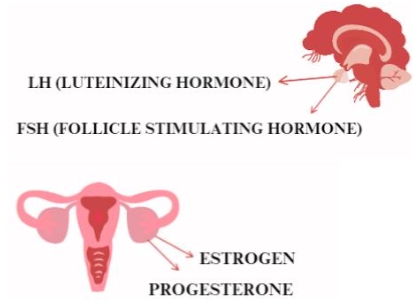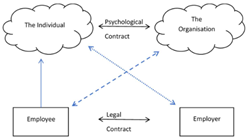The effect of exercise on quality of life, fatigue, and pain management in older women: A cross-sectional study in Greece
Abstract
Background: Frequently, the contribution of exercise to the elderly and the associated benefits of such activities are discussed. Aim: This paper deals with the contribution of exercise to the levels of quality of life, fatigue, and pain management. Method: Then, quantitative and cross-sectional research is carried out to investigate the contribution of physical exercise to the levels of quality of life, fatigue, and pain management in women over 60 years of age. For the data collection, the questionnaire used consisted of the Missoula—VITAS Quality of Life Index (MVQOLI), the Pain Assessment Questionnaire (PSeQ), and the Fatigue Assessment Scale (FAS). Results: From the statistical analysis made between exercise and quality of life, fatigue, and pain management of the women over 60 who participated in the research, it follows that women undergoing exercise show a better quality of life and less fatigue, while no statistically significant difference was detected in terms of pain management. Conclusion: It seems that exercise positively affects quality of life and fatigue. Potential implications must be addressed in order to organize more exercise programs, particularly for older people.
References
Andruszkiewicz, A., & Basińska, M. (2016). Mental states in early and late old age patients and their expectations of their physicians. Psychiatria Polska, 50(5), 1001–1014. https://doi.org/10.12740/pp/61408
Avlund, K. (2010). Fatigue in older adults: an early indicator of the aging process? Aging Clinical and Experimental Research, 22(2), 100–115. https://doi.org/10.1007/bf03324782
Awick, E. A., Wójcicki, T. R., Olson, E. A., et al. (2014). Differential exercise effects on quality of life and health-related quality of life in older adults: a randomized controlled trial. Quality of Life Research, 24(2), 455–462. https://doi.org/10.1007/s11136-014-0762-0
Byock, I. R., & Merriman, M. P. (1998). Measuring quality of life for patients with terminal illness: the Missoula–VITAS® quality of life index. Palliative Medicine, 12(4), 231–244. https://doi.org/10.1191/026921698670234618
Cella D. F. (1994). Quality of life: concepts and definition. J Pain Symptom Manage, 9(3), 186–192.
Cohen, M., Kahn, D., & Steeves, R. (2000). Hermeneutic Phenomenological Research: A Practical Guide for Nurse Researchers. https://doi.org/10.4135/9781452232768
Fox, K. R., Stathi, A., McKenna, J., et al. (2007). Physical activity and mental well-being in older people participating in the Better Ageing Project. European Journal of Applied Physiology, 100(5), 591–602. https://doi.org/10.1007/s00421-007-0392-0
Friesen, J. (2023). Towards a Link between Quantitative and Qualitative Sciences to Understand Social Systems Using the Example of Informal Settlements. Entropy, 25(2), 262. https://doi.org/10.3390/e25020262
Gurková E., Čáp J., & Žiaková K. (2010). Job satisfaction of Slovak nurses. In: Contemporary Issues of Nursing Education and Practice. University of Stavanger. pp.232–244.
Hosseini F., Mullins S., Gibson W., & Thake M. (2022). Acute pain management for older adults. Clinical medicine (London, England), 22(4), 302–306. https://doi.org/10.7861/clinmed.22.4.ac
Kallivoka M., Alikari V., Spetsioti S., et al. (2019). Fatigue and Quality of Life after Pulmonary Rehabilitation Program. Pneumon Number 3, 32, 72–80.
Khalid K., Abdullah H. H., & Kumar M. D. (2012). Get along with quantitative research process. International Journal of Research in Management, 2(2), 15–29.
Kuykendall, L., Tay, L., & Ng, V. (2015). Leisure engagement and subjective well-being: A meta-analysis. Psychological Bulletin, 141(2), 364–403. https://doi.org/10.1037/a0038508
Landi, F., Onder, G., Carpenter, I., et al. (2007). Physical activity prevented functional decline among frail community-living elderly subjects in an international observational study. Journal of Clinical Epidemiology, 60(5), 518–524. https://doi.org/10.1016/j.jclinepi.2006.09.010
Menting, J., Tack, C. J., Bleijenberg, G., et al. (2018). Is fatigue a disease-specific or generic symptom in chronic medical conditions? Health Psychology, 37(6), 530–543. https://doi.org/10.1037/hea0000598
Michielsen H. J., De Vries J., & Van Heck G. L. (2003). Psychometric qualities of a brief self-rated fatigue measure: The Fatigue Assessment Scale. J Psychosom Res., 54, 345–352.
Patel, K. V., Guralnik, J. M., Dansie, E. J., et al. (2013). Prevalence and impact of pain among older adults in the United States: Findings from the 2011 National Health and Aging Trends Study. Pain, 154(12), 2649–2657. https://doi.org/10.1016/j.pain.2013.07.029
Rodriguez-Laso, A., Zunzunegui, M. V., & Otero, A. (2007). The effect of social relationships on survival in elderly residents of a Southern European community: a cohort study. BMC Geriatrics, 7(1). https://doi.org/10.1186/1471-2318-7-19
Schipper H., Clinch J. J., & Olweny C. L. M. (1996). Quality of life studies. Definition and conceptual issues. In: Quality of life and pharma economics in clinical trials. Lippincott-Raven, Philadelphia; pp. 11–24.
Spirduso, W. W., & Cronin, D. L. (2001). Exercise dose-response effects on quality of life and independent living in older adults. Medicine and Science in Sports and Exercise, 33(Supplement), S598–S608. https://doi.org/10.1097/00005768-200106001-00028
Spitzer W. O., Dobson A. J., Hall J., et al. (1981). Measuring the quality of life of cancer patients: a concise QL-index for use by physicians. J Chronic Dis., 34(12), 585–597.
Tharenou, P., Donohue, R., & Cooper, B. (2007). Management Research Methods. https://doi.org/10.1017/cbo9780511810527
Theofilou, P., Aroni, A., Ralli, M., et al. (2013). Measuring health: related quality of life in hemodialysis patients. Psychometric properties of the Missoula-VITAS Quality of Life Index (MVQOLI-15) in Greece. Health Psychology Research, 1(2), 17. https://doi.org/10.4081/hpr.2013.1004
Theofilou, P., Aroni, A., Tsironi, M., et al. (2013). Measuring pain self-efficacy and health related quality of life among hemodialysis patients in Greece: a cross-sectional study. Health Psychology Research, 1(3), 30. https://doi.org/10.4081/hpr.2013.1522
Theofilou, P. (2013). Evaluation of Quality of Life in Greek Patients with Heart Failure: The Role of Health Cognitions before and after Participation in an Exercised- Based Rehabilitation Program. Journal of Clinical Trials, 03(02). https://doi.org/10.4172/2167-0870.1000135
Theofilou, P. (2023). Heart Failure Patients: How Effective Can a Rehabilitation Program be in Relation to Physical and Mental Fatigue, General Health and Anxiety? Trends Journal of Sciences Research, 1(1), 41–45. https://doi.org/10.31586/gjcd.2023.599
Theofilou P., Kapsalis F., & Panagiotaki H. (2012). Greek version of MVQOLI-15: Translation and cultural adaptation. International Journal of Caring Sciences, 5(3), 289–294.
Theofilou P., Zyga S. (2014). Psychometric properties of the Missoula—VITAS quality of life index in Greek patients undergoing chronic periodical haemodialysis. Hellenic Journal of Nursing, 53(2), 166–174.
van der Maas, L. C. C., de Vet, H. C. W., Köke, A., et al. (2012). Psychometric Properties of the Pain Self-Efficacy Questionnaire (PSEQ). European Journal of Psychological Assessment, 28(1), 68–75. https://doi.org/10.1027/1015-5759/a000092
van Seben, R., Reichardt, L. A., Aarden, J. J., et al. (2019). The Course of Geriatric Syndromes in Acutely Hospitalized Older Adults: The Hospital-ADL Study. Journal of the American Medical Directors Association, 20(2), 152-158.e2. https://doi.org/10.1016/j.jamda.2018.08.003
Zyga, S., Alikari, V., Sachlas, A., et al. (2015). Assessment of Fatigue in End Stage Renal Disease Patients Undergoing Hemodialysis: Prevalence and Associated Factors. Medical Archives, 69(6), 376. https://doi.org/10.5455/medarh.2015.69.376-380
Copyright (c) 2024 Paraskevi Theofilou, Konstantina Papaemmanouil

This work is licensed under a Creative Commons Attribution 4.0 International License.









